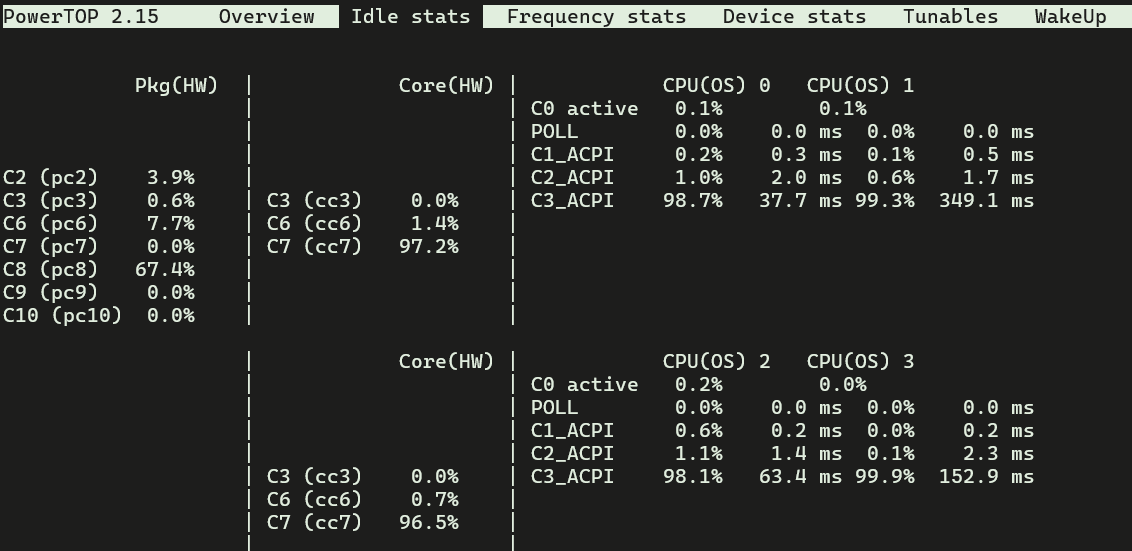Problem / Justification
TrueNAS SCALE currently disables the intel_idle driver by default. This prevents Intel CPUs from entering deep C-states like C6–C10, which is critical for achieving low idle power consumption. On modern platforms (12th Gen and newer), intel_idle provides significantly better power management than the fallback acpi_idle driver.
As a result, users running TrueNAS SCALE on energy-efficient hardware—especially home lab users and those deploying 12th Gen, 13th Gen, or newer Intel CPUs—experience unnecessarily high idle power consumption. Community members have attempted workarounds (e.g., kernel boot parameters like intel_idle=force), but these fail because the driver is not included in the TrueNAS kernel (modprobe intel_idle fails, and PowerTOP confirms no deep C-states).
Impact
Re-enabling or supporting the intel_idle driver would benefit TrueNAS users on Intel platforms by significantly reducing idle power draw, thermal output, and long-term energy costs.
Benefits:
- Lower idle power draw (~10–15W savings possible)
- Cooler and quieter systems
- Better efficiency for 24/7 deployments
- No behavior change unless deliberately enabled
Disadvantages:
- Slightly increased kernel footprint
- Potential misuse by inexperienced users (can be mitigated with documentation or a toggle)
User Story
I am running TrueNAS SCALE on an Intel Core i7-13700K system. On Debian- or Ubuntu-based distributions with intel_idle support, my system idles below 10W with deep C-state residency. On TrueNAS SCALE, idle power is consistently 10–20W higher due to lack of intel_idle.
Even with proper kernel boot arguments (intel_idle=force, intel_idle.max_cstate=9, processor.max_cstate=9), the driver fails to load.
Sample errors/output:
modprobe intel_idlefails with:
FATAL: Module intel_idle not found in directory /lib/modules/...dmesg | grep intel_idlereturns nothing- PowerTOP shows only:
C1_ACPI,C2_ACPI,C3_ACPI(confirms fallback to acpi_idle)
This issue directly impacts power-conscious deployments and home lab users running 24/7 systems. If TrueNAS SCALE supported intel_idle, I could dramatically improve idle efficiency without losing platform functionality.
Request
Please consider enabling intel_idle in the TrueNAS SCALE kernel (either built-in or as a module), or provide a supported method to activate it through system settings.
TL;DR: This would bring SCALE in line with other modern Linux distros and deliver meaningful power savings to a wide segment of the user base.
Tested on: Intel Core i7-13700K, ASUS ROG Strix Z790-A, SCALE 25.04.x
